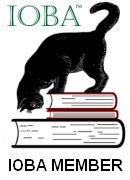Corn Pone, Corn Domestication in the Americas, and Nixtamalization
by Steven Williams
Indian Pone
(also known as Corn Pone)
"Put on one quart of water in a pot, as soon as it boils stir in as much Indian meal as will make a very thin batter. Beat it frequently while it is boiling, which will require ten minutes; then take it off, pour it in a pan, and add one ounce of butter, and salt to taste. When the batter is luke-warm stir in as much Indian meal as will make it quite thick. Set it away to rise in the evening; in the morning make it out in small cakes, butter your tins and bake in a moderate oven. Or the more common way is to butter pans, fill them three parts full, and bake them."
"This cake requires no yeast."
A recipe from The Household Cyclopedia of General Information Containing Over Ten Thousand Receipts, in all the Useful and Domestic Arts by Henry Hartshorne
(published by Thomas Kelly, New York, 1881)
"...after considerable hard labor, the meal was provided. If the corn meal was mixed and baked in a Dutch oven, it was called "pone" if baked on a board. near or over the fire, it was called "Johnny cake" and if it was made into round balls and baked in the oven, they then called these balls "corn dodgers." A very common way was to boil the meal into mush and eat it with milk." |
 Corn or maize is a member of the grass family of plants. It is currently believed that corn domestication and cultivation originated in Mexico at least as early as the second millennia BCE. Corn and its techniques of cultivation spread throughout most of North and South America and Amerindians had been growing it for centuries or longer before the arrival of Europeans. Currently, corn is the third most important food crop in the world for humans as well as their domesticated animals that are raised for food. Human consumption of corn is now found throughout the world's cuisines ranging from Mexican enchiladas, tortillas, and Chinese baby-corn, to African-American grits, corn flakes, and popcorn. One of corn's best known uses is for the production of corn-based alcoholic beverages such as whiskey and bourbon.
Corn or maize is a member of the grass family of plants. It is currently believed that corn domestication and cultivation originated in Mexico at least as early as the second millennia BCE. Corn and its techniques of cultivation spread throughout most of North and South America and Amerindians had been growing it for centuries or longer before the arrival of Europeans. Currently, corn is the third most important food crop in the world for humans as well as their domesticated animals that are raised for food. Human consumption of corn is now found throughout the world's cuisines ranging from Mexican enchiladas, tortillas, and Chinese baby-corn, to African-American grits, corn flakes, and popcorn. One of corn's best known uses is for the production of corn-based alcoholic beverages such as whiskey and bourbon.
 Tortillas and tamales, the most widely known ancient prepared corn foods, are made from dried and nixtamalized corn that is ground on the metate, a basalt platform used for hand grinding in the kitchen. Traditional processing of dried corn kernels into corn meal or flour begins by cooking and steeping the corn kernels in an alkaline bath (also called a lime bath). Once the dried kernels had softened enough in the alkaline bath, the hard outer hull is easily removed and the softened kernels of corn are washed. After washing, the softened corn kernels are essentially ready to be ground using the metate.
Tortillas and tamales, the most widely known ancient prepared corn foods, are made from dried and nixtamalized corn that is ground on the metate, a basalt platform used for hand grinding in the kitchen. Traditional processing of dried corn kernels into corn meal or flour begins by cooking and steeping the corn kernels in an alkaline bath (also called a lime bath). Once the dried kernels had softened enough in the alkaline bath, the hard outer hull is easily removed and the softened kernels of corn are washed. After washing, the softened corn kernels are essentially ready to be ground using the metate.
 The metate, a simple manual basalt grinder, is essentially a grinding slap, usually slopped and with a slightly concave surface, and it is used in association with a cylindrical 'mano' or 'mano de piedra' grinding tool. the mano is a cylindrical pestle made of the same basalt of the metate, shaped somewhat like a rolling pin but tapered slightly towards each end. These ancient tools for grinding corn are still in use today. The kernels of corn, softened by cooking and steeping in the alkali bath and with their hard, indigestible hulls removed, are ground into a paste or masa which is either immediately used for cooking, in the form of tortillas or tamales for example, or else it is dried into a flour (also called masa) that can be re-hydrated for later use.
The metate, a simple manual basalt grinder, is essentially a grinding slap, usually slopped and with a slightly concave surface, and it is used in association with a cylindrical 'mano' or 'mano de piedra' grinding tool. the mano is a cylindrical pestle made of the same basalt of the metate, shaped somewhat like a rolling pin but tapered slightly towards each end. These ancient tools for grinding corn are still in use today. The kernels of corn, softened by cooking and steeping in the alkali bath and with their hard, indigestible hulls removed, are ground into a paste or masa which is either immediately used for cooking, in the form of tortillas or tamales for example, or else it is dried into a flour (also called masa) that can be re-hydrated for later use.  Fresh masa (masa paste) is generally considered superior to re-hydrated masa flour for making tortillas.
Fresh masa (masa paste) is generally considered superior to re-hydrated masa flour for making tortillas.
The part of process for making masa that involves the use of the alkaline bath and subsequent hull removal and rinsing is called nixtamalization. The name of this process comes from the fact that the alkali processed corn, best known in the US as hominy and sometimes as posole (or pozole or posolli or pozol), was called nixtamal by the Mexica-Aztecs. Nixtamal traditionally received a little more processing beyond soaking an a alkaline bath, rinsing, and grinding before it was ready to use as maza or corn dough or flour but these are the key parts of the nixtamalization process.  The greatest benefit of nixtamalization beyond making corn kernels easier to grind is that it adds significant nutritional value to the finished corn flour or maza.
The greatest benefit of nixtamalization beyond making corn kernels easier to grind is that it adds significant nutritional value to the finished corn flour or maza.
Traditional Mexica-Aztec corn preparation processes add both calcium and digestible iron to the resulting corn flour as well as having other nutritional benefits. Pre-Columbian Central American nixtamalization involved the use of lime (calcium hydroxide), traditionally called cal or tequesquite and also known as slaked lime, hydrated lime, builder's lime, slack lime or pickling lime, in combination with ash (potassium hydroxide) to create the alkaline bath for soaking and cooking the dried corn kernels. Lime is made when calcium oxide, commonly called lime or quicklime, is mixed or 'slaked' with water. Lime or quicklime is made by heating limestone in specially designed kilns. The earliest evidence of nixtamalization has been found in processing equipment dating from 1200 to 1500 BCE.
 Besides softening the corn kernels in preparation for grinding, one of nixtamalization's primary nutritional benefits comes from increasing the calcium content of the masa or dough. This increase in calcium content can be by as much as ten to twenty times that of corn that is not treated with an calcium hydroxide or alkaline bath. The increase in calcium content in corn maza comes from the use of a calcium hydroxide based alkaline bath. Nixtamalization can also create significant increases in masa's content of iron, copper, and zinc. These additional minerals are made available in the masa because of the materials the processing cooking equipment are made from. The alkali cooking and steeping causes the chemical extraction of free metal ions from the processing vessels as well as chemical modifications to the corn chemistry that make these free metal ions available and absorbable for the body.
Besides softening the corn kernels in preparation for grinding, one of nixtamalization's primary nutritional benefits comes from increasing the calcium content of the masa or dough. This increase in calcium content can be by as much as ten to twenty times that of corn that is not treated with an calcium hydroxide or alkaline bath. The increase in calcium content in corn maza comes from the use of a calcium hydroxide based alkaline bath. Nixtamalization can also create significant increases in masa's content of iron, copper, and zinc. These additional minerals are made available in the masa because of the materials the processing cooking equipment are made from. The alkali cooking and steeping causes the chemical extraction of free metal ions from the processing vessels as well as chemical modifications to the corn chemistry that make these free metal ions available and absorbable for the body.
 Besides increasing the amount of digestible calcium and iron, nixtamalization also frees up the vitamin niacin for absorption by the body and improves the amino acid content and balance in the resulting corn paste and flour. Processing corn with an alkaline bath increases solubility of the protein gluten plus it chemically converts corn proteins, specifically albumins, globulins, glutelin, and zein, into the essential amino acids tryptophan and lysine. In also increases the ratio of isoleucine to luecine, which are both amino acids but isoleucine is an amino acid essential for human nutritional health. These effects in combination with the cultivation and consumption of the other two 'legs' of the traditional 'Indian triad' (also called the 'Mesoamerican triumvirate' or 'The Three Sisters') of beans and squash, results in a diet that provides the complete range of essential amino acids and vitamins required for healthy human nutrition.
Besides increasing the amount of digestible calcium and iron, nixtamalization also frees up the vitamin niacin for absorption by the body and improves the amino acid content and balance in the resulting corn paste and flour. Processing corn with an alkaline bath increases solubility of the protein gluten plus it chemically converts corn proteins, specifically albumins, globulins, glutelin, and zein, into the essential amino acids tryptophan and lysine. In also increases the ratio of isoleucine to luecine, which are both amino acids but isoleucine is an amino acid essential for human nutritional health. These effects in combination with the cultivation and consumption of the other two 'legs' of the traditional 'Indian triad' (also called the 'Mesoamerican triumvirate' or 'The Three Sisters') of beans and squash, results in a diet that provides the complete range of essential amino acids and vitamins required for healthy human nutrition.
 Besides increasing the nutritional content of corn meal, nixtamalization also provides the added benefits of improving the flavor and aroma of corn meal as well as reducing the mycotoxins that commonly infect maize by 90 to 94 percent. Because of all these benefits of the nixtamalization process, even modern industrialized production of masa includes the nixtamalization of corn. Cultures in which some form of the nixtamalization process is not used tend to have the deficiency diseases pellagra (associated with niacin and tryptophan deficiencies), kwashiorkor (associated with protein deficiencies), and rickets (associated with calcium deficienties).
Besides increasing the nutritional content of corn meal, nixtamalization also provides the added benefits of improving the flavor and aroma of corn meal as well as reducing the mycotoxins that commonly infect maize by 90 to 94 percent. Because of all these benefits of the nixtamalization process, even modern industrialized production of masa includes the nixtamalization of corn. Cultures in which some form of the nixtamalization process is not used tend to have the deficiency diseases pellagra (associated with niacin and tryptophan deficiencies), kwashiorkor (associated with protein deficiencies), and rickets (associated with calcium deficienties).
 At one time, the diet of most United States Southerners consisted of pork (fattened on corn) and corn meal (usually not nixtamalized) plus coffee sweetened with molasses. This simple diet, sometimes called 'The Three M's', often resulted in the poorest Southerners suffering from the deficiency diseases rickets and pellagra. This narrow food dependency developed in part because of the ease of planting, rapid growth, and high productivity of corn. Without additional traditional nixtamalization processing of corn, this meant that European settlers, particularly frontier settlers, adopted a diet which, when there was no additional variety in that diet, guaranteed malnutrition.
At one time, the diet of most United States Southerners consisted of pork (fattened on corn) and corn meal (usually not nixtamalized) plus coffee sweetened with molasses. This simple diet, sometimes called 'The Three M's', often resulted in the poorest Southerners suffering from the deficiency diseases rickets and pellagra. This narrow food dependency developed in part because of the ease of planting, rapid growth, and high productivity of corn. Without additional traditional nixtamalization processing of corn, this meant that European settlers, particularly frontier settlers, adopted a diet which, when there was no additional variety in that diet, guaranteed malnutrition.
 In years past in the United States, most southern farmers raised all of their own corn. Corn functioned as an essential crop both for livestock feed and for human consumption. Two and a half acres of corn for a family of three was a fairly standard corn planting. Any additional plantings of corn was for the hogs and chickens. When people needed corn meal made from their corn, they took some of their corn to a mill. These mills were at first water mills, which used stone wheels to grind the corn into meal; later mills were powered by gasoline or electricity. The miller's pay was set at a portion of the finished corn meal, and the miller usually accumulated his portions to sell to townspeople or others who did not raise their own corn.
In years past in the United States, most southern farmers raised all of their own corn. Corn functioned as an essential crop both for livestock feed and for human consumption. Two and a half acres of corn for a family of three was a fairly standard corn planting. Any additional plantings of corn was for the hogs and chickens. When people needed corn meal made from their corn, they took some of their corn to a mill. These mills were at first water mills, which used stone wheels to grind the corn into meal; later mills were powered by gasoline or electricity. The miller's pay was set at a portion of the finished corn meal, and the miller usually accumulated his portions to sell to townspeople or others who did not raise their own corn.
"Meal or grits straight from the miller's stones has to be sifted to remove the bran and most of the chips. My mother kept a large sifter. As she needed cornmeal to cook, she sifted out the bran and chips. Those chips and bran were fed to the chickens; the sifted meal was prepared into cornbread." |
For additional recipes see also:
Andalusian Gaspacho, a recipe by Van Wyck Brooks
Beer Bread, a bronze age flavor variation with other ideas
Spring Fava Beans, Roman Style
Christmas holiday food and drink from the works of Charles Dickens
Beef Burgundy, Crackling Bread, Pice Ar Y Maen, Sevillian Yellow Plum Conserve, and Les Ioles (Writers' and Artists' recipes)
Omlette Aurore by Alice B. Toklas, Artists' and Writers' Recipes
Home
Older Article: V is for Verbal Violence










